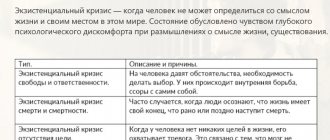Brandon Turner
Entrepreneur, investor, author of several books and editor-in-chief of a social network specializing in real estate. Brandon developed his own algorithm, following which you can forever forget about what a creative crisis is. Using it, he was able to write 250,000 words in a year.
You firmly decided to write something, sat down at your workplace, opened your laptop and text editor, but the inspiration suddenly disappeared somewhere insidiously. A good half hour has passed, and you continue to sit in front of a completely blank page.
It doesn't matter what you're trying to write: a book, a blog article, or anything else. Writer's block, or writer's block, is a very real thing that will slow down your work and be incredibly annoying.
It is unlikely that any of us can absolutely guarantee that every day, under any conditions and weather, we will be able to easily produce one, or even several, ideal texts.
Inspiration is a capricious and fickle thing, so you need to be able to write without waiting for it. Below we will look at four simple tips that should help in this situation.
Use "kindergarten" tricks
Remember when you were a child, teachers probably asked you more than once to complete an assignment in which you had to fill in the blanks with missing words. Something like that:
My favorite color - ________. My mother's name - ________. When I grow up, I want to become ________ because ________.
It’s unlikely that you experienced any particular difficulties in completing this task then, right? There was no talk of any creative blocks. The reason for this simplicity is that the topic has already been determined in advance and all you have to do is simply write the right words in the right places.
This is why filling in the gaps in your work is considered the easiest way to overcome writer's block. A detailed action plan will help you. The more details and subtleties you can pre-think and mentally place in your still imaginary text, the easier it will ultimately be to write it.
Today, before responding to emails to the right people, I spent five minutes outlining every point I wanted to get across. Therefore, when it came time to write the letters themselves, all I had to do was just “fill in the gaps” for each specific letter, expanding on each idea point by point. Writing letters did not take much time: it only took half an hour to sort out the mail. I only got through it so quickly because I didn't have to make any decisions. It wasn’t like I just sat there and thought, “Hmm, what should I write about today?”
Brandon Turner
The most difficult part of the job is the decision-making process. Therefore, if you cope with this task in advance, you will make your life much easier. Don't complicate things: when you realize that you can't move from a dead point, just remember this naive kindergarten method.
How to get out of a creative crisis
Translated from ancient Greek, the word “crisis” means a transitional state, a turning point, a revolution, etc. Thus, those who are overcome by a creative crisis must realize that this is a temporary phenomenon. You just need to wait it out, because a creative crisis is not the end, but just a pause that you need to take advantage of to give your body a break.
We can say that a creative crisis is useful for a person: it is given in order to put thoughts in order and solve long-standing problems for which there was not enough time before.
1. In a state of emptiness, characteristic of a creative crisis, you should not force yourself to get your work off the ground - both time and effort will be wasted, which will only increase despair and depression.
Not every job can be put off until inspiration strikes. Deceiving oneself by persuading oneself to work for at least half an hour often helps to overcome internal resistance and stubborn reluctance to get down to business. Practice shows that this half hour stretches over several hours until all or most of the work is done. The well-known rule “Appetite comes with eating” also justifies itself here.
There is another interesting opinion. The artist Van Gogh advised: “If an inner voice tells you that you can no longer paint, continue to paint until it is silent.” He is echoed by another classic who has experienced a creative crisis more than once - N.V. Gogol. He said: “If you can’t write today, then write - there’s something I can’t write today.” You just have to start - and the necessary thoughts will come on their own.
2. During a creative crisis, a forced break from work can be used to switch to other things that had to be put off due to busyness: repairs, doctor’s visits, organizing closets, etc. They will distract from depressive thoughts that “everything is is gone” and inspiration will never return (see “90 Proven Ways to Overcome Writer’s Block and Find Inspiration Again”). Moreover, when new ideas appear, there will be no time left for household chores.
3. Creative people work mainly while sitting. And, as you know, to achieve the best results, mental work should be alternated with physical work. Physical activity, especially in the fresh air, improves blood circulation and nutrition of the brain, so you shouldn’t sit in one place for hours and torment yourself with finding the best solutions.
If signs of creative block appear, it is worth taking a break from work for a while and warming up - running, going to the gym or swimming pool, working in the garden, or just taking a walk in the park. It is also useful to simply stand under the shower or lie in the bath - the water “washes away” all the negativity, and the person feels renewed.
Yoga and meditation can help relieve tension and allow you to relax.
5. Many people who are “caught up” with a creative crisis are “treated” with books, music, and films. For some, going to a bookstore helps, while for others, looking at old photographs helps. Some people need to be alone, while others need to meet with friends who can give them a fresh idea or make them look at a problem with different eyes.
The time of creative crisis should be used to visit theaters, concerts, museums, and exhibitions, because the more diverse a person’s interests and the higher the cultural level, the more significant his ideas. Moreover, someone’s painting or melody may well serve as an impetus for new creative ideas (see “How to develop creativity and creative thinking”).
However, psychologists do not advise looking for inspiration in the works of colleagues: it is better for a writer to look through albums with reproductions, and for an artist to read a book. Otherwise, a person who is in a creative stupor will inevitably compare himself with a colleague and draw conclusions that are not in his favor.
7. Psychologists believe that the most effective method of getting out of creative stagnation is to urgently change the environment, changing the “picture” before your eyes for a while. Everyday monotony and routine lead to a gradual fading of the feeling of joy and happiness, when everything comes easily and simply.
It is impossible to give unambiguous advice - one for everyone - on how to get out of a creative stupor. Every creative person has had to experience a similar state sooner or later - and everyone has their own recipe. After all, the main thing is to rest, relax and temporarily switch to another activity.
And everyone has their own ways of doing this. For one person it is enough to sleep and relax with his family, while for another he needs to be alone, having gone far and long. Some people are “cured” by going to the mountains, while others are treated by vintage shopping. The only thing you shouldn’t do is fuel your psyche with alcohol and drugs - the emotional outburst after using them will eventually turn into deep depression.
Take cues from professional athletes
Have you ever seen a professional golfer getting ready to put a ball in the hole? Have you noticed how a basketball player shoots a free throw? Or how does a baseball pitcher throw a ball?
When athletes are about to perform a trick that they've done a million times before, they almost always stick to some kind of predetermined order. For example, they take three steps to the right, spin the ball in their hand, or bounce it off the floor. They all have a little ritual that precedes the routine action.
Why do they need this? A pre-established order helps to tune in to the correct execution of the action and strengthens a kind of “success mindset”. The same rules apply to writers. It's time to come up with a couple of rituals for yourself.
When Brandon Turner wrote his first book, his daily routine was very simple:
Get up at 5:30. Drink a glass of water. Do a five-minute exercise. Sit on the sofa for a while (always in the same place). Open laptop. Review your pre-planned action plan. Start “filling in the blanks.”
Brandon claims that he followed this schedule every day for a hundred days and never experienced writer's block. Thanks to a clear daily routine, he immediately began to work, limiting the impact of all distractions that could lead to loss of performance.
Here are some recommendations that will help you get into a working rhythm faster:
- Write in the same designated place.
- Write at the same time.
- Listen to the same song before work.
- Use the same text editor for writing.
- Write every day. Nothing kills routine faster than the weekend.
What factors contribute to the onset of a creativity crisis?
One of the main causes of creative crisis is overwork. A person who is too carried away by the creative process forgets about rest, fearing that inspiration will leave him. However, the emotional uplift that accompanies the creative process is replaced by fatigue, apathy and depression. The body is tired and requires a break, because it has used up its energy reserves and needs time to replenish them.
People whose work involves creativity often lack sleep, which also contributes to overwork.
Another common cause of creative crisis is lack of harmony in personal life. A crisis in life entails a crisis in creativity. Creative people are usually deeply vulnerable, and it is not so difficult to upset their mental balance. Discord in the team, quarrels in the family, financial difficulties, illness of a loved one, etc. - such problems prevent them from concentrating and completely surrendering to the creative process.
A creative crisis also comes from the monotony and routine of everyday life, the lack of bright impressions and a source of inspiration.
Some creative people fall into a creative stupor even if they have too much work to do. At the initial stage of its implementation, they may have so many different ideas and plans that, due to the confusion in their thoughts, it can be difficult for them to systematize them and decide where to start. That is, their crisis comes not because they have nothing to say, but because they immediately want to express too much.
It also happens that a lack of access to the necessary information leads to a creative crisis.
Creative people - writers and poets, artists and musicians - are often too demanding of themselves, and if the completed work does not live up to their expectations, they can destroy it. At the same time, they often become depressed and give up creative work for a long time.
Add a little weirdness
This might sound a little outlandish, but Brandon says it's one of the best ways to overcome writing challenges.
First, decide who you are writing for. No, you don’t need to come up with an abstract character of some gender, age or profession. Find a real, real person to write for.
Look through your friends on social networks and choose one specific person. Perhaps it will be your mom, some other relative, or a guy you barely knew in high school.
Once you've found your lucky winner, print out their photo (yes, this is where things start to get weird). You shouldn’t print a huge portrait, limit yourself to a small photo card. Place it near your workplace (no need to stick needles into it).
Now all you have to do is write for that person. How would you explain the topic to him or her? How would you tell your story? It turns out that, instead of writing to some unknown reader, you are now writing for a specific person. Surprisingly, this little trick really works.
Reasons for loss of inspiration in creativity
Adolescence crisis in psychology - what is it, reasons
The main reasons for a creative crisis are:
- Heavy workload, fatigue;
- Severe emotional upheaval, stress;
- Bad feeling;
- Weak motivation for creativity;
- Pressure exerted on a person by others through requests to paint a picture or compose music.
Interesting. Studies of creativity as a personality trait have shown that peaks of creativity in people occur once every 4 years. Therefore, after a productive creative period, a quiet phase naturally follows.
Loss of creativity
For whom is this a serious problem?
Volitional personality traits - what is it in psychology, their formation
Creative crisis is a problem for people employed in creative professions, whose work activities involve intellectual stress.
A lack of creative ideas and lack of inspiration disrupt the work schedule. A person lets down customers, as a result of which he receives a reprimand from his superiors. This worsens the mood even more, and a persistent desire to change jobs appears.
Perhaps, dancers, designers, musicians, journalists, fashion designers, and photographers suffer more than others from creative depression.











